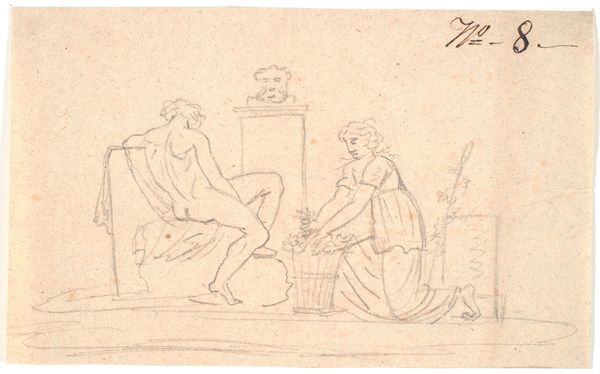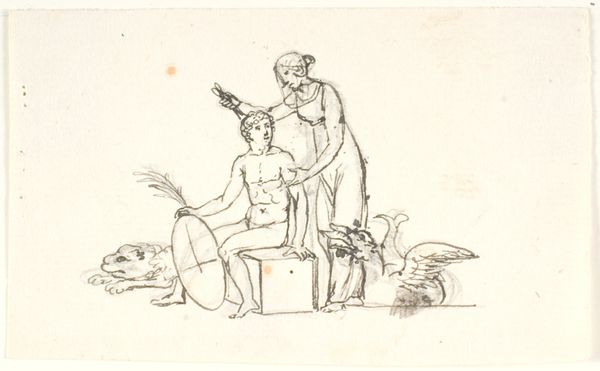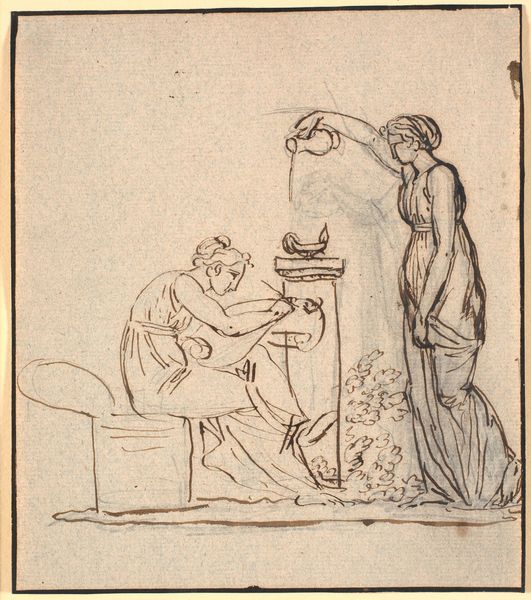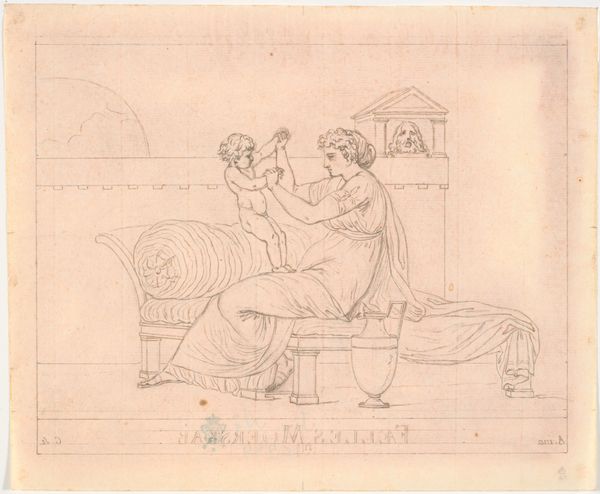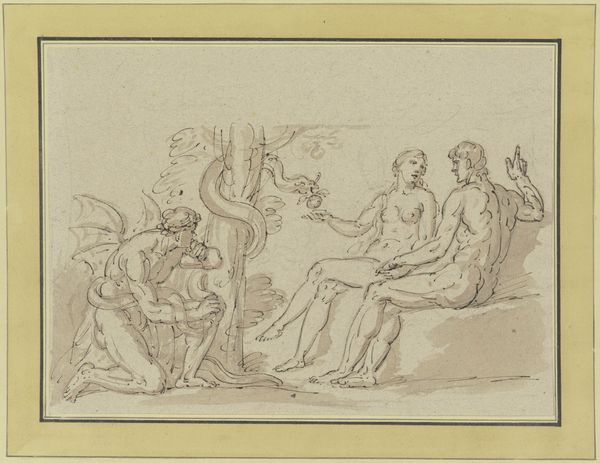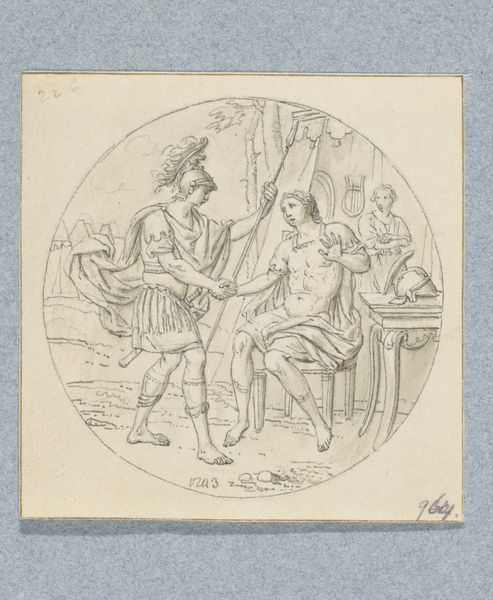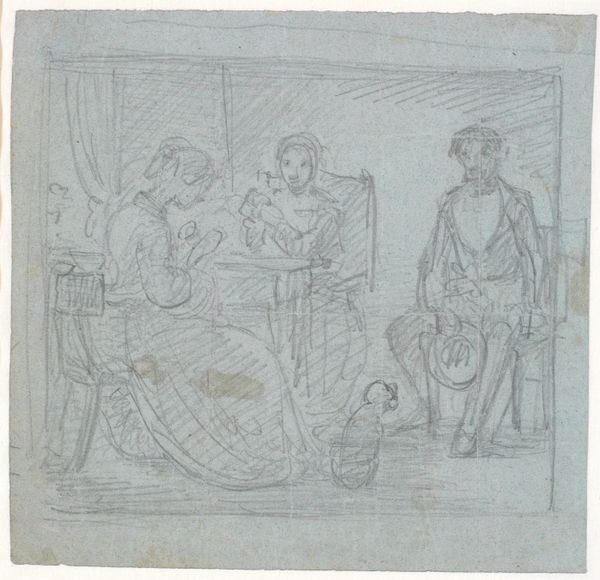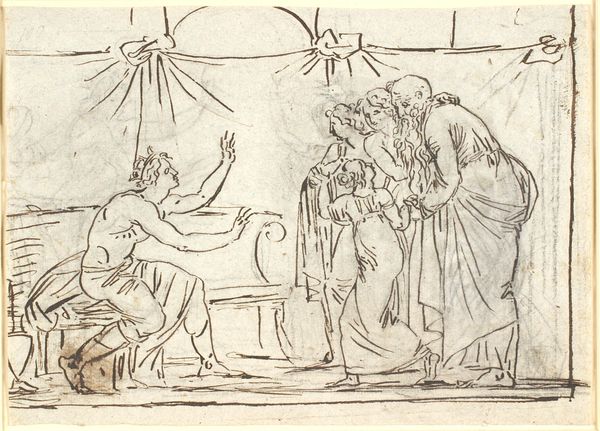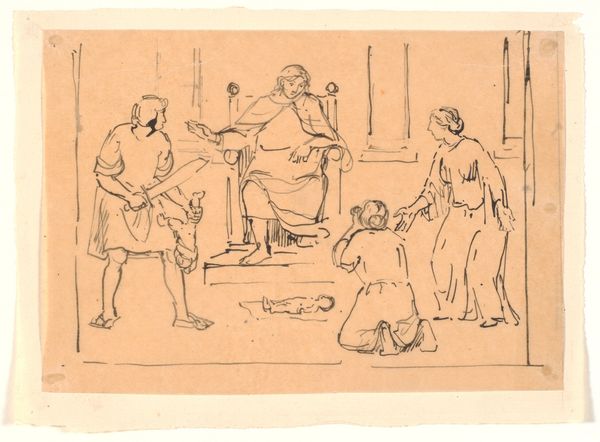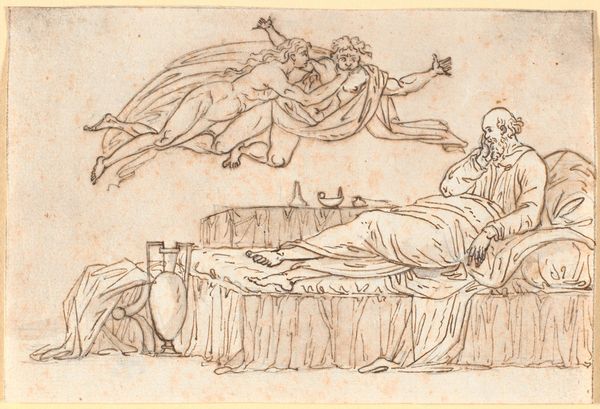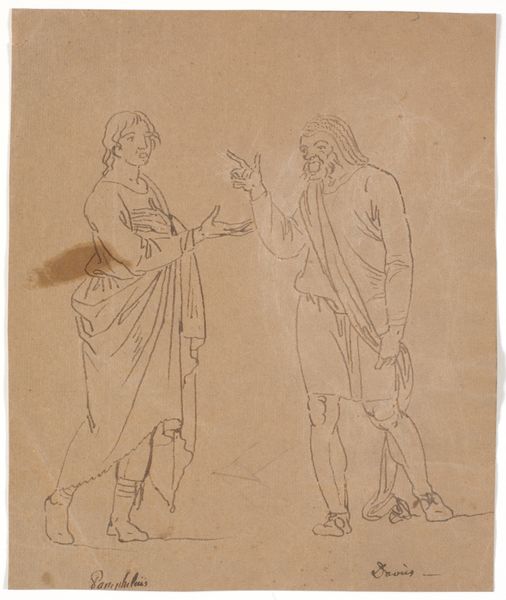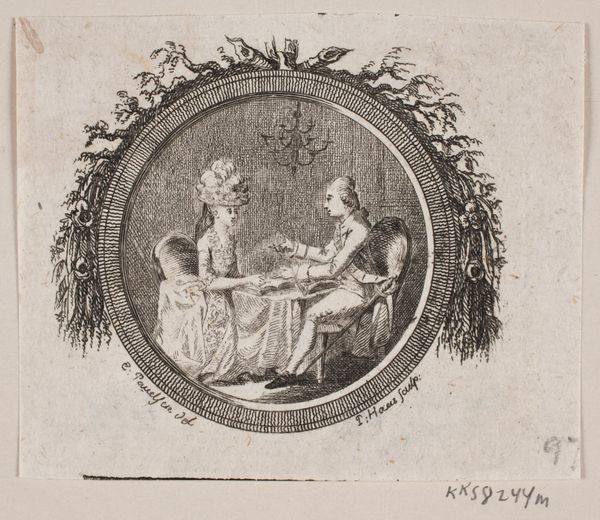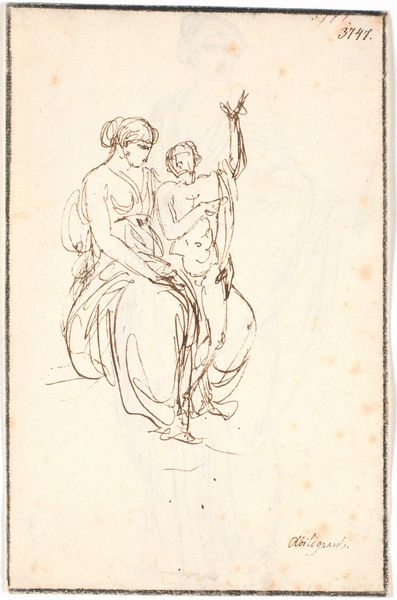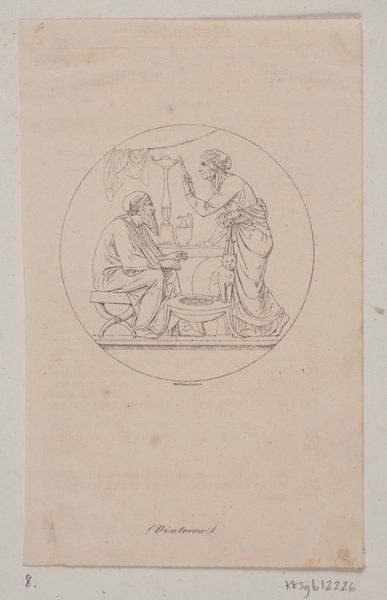
drawing, pencil
#
drawing
#
neoclacissism
#
figuration
#
pencil
#
history-painting
Dimensions: 192 mm (height) x 291 mm (width) (bladmaal)
Editor: This is a pencil drawing by Nicolai Abildgaard called "To figurer," dating from around 1743 to 1809. The delicate lines and classical subject matter give it a very formal, almost staged feeling. What can you tell me about its context? Curator: It's fascinating to consider this drawing within the historical context of Neoclassicism. How do you think the burgeoning museum culture of the late 18th and early 19th centuries, and its emphasis on the art of classical antiquity, influenced Abildgaard's artistic choices in "To figurer"? Editor: That’s a good point. The poses feel very deliberate and reminiscent of ancient Greek or Roman sculptures, a bit like a history painting on paper. Was Abildgaard commenting on a particular societal value of his time? Curator: Indeed. Neoclassicism often served as a visual language for conveying Enlightenment ideals of order, reason, and civic virtue, virtues valued after the French Revolution, although this artist was working pre-revolution. Consider how the public reception of such idealized figures would have served socio-political goals within the art world. Who do you imagine were the likely audience for artwork such as this, and in what kind of location might they have viewed this piece? Editor: I guess it would have been wealthy people who collected art and understood its political messaging. I never thought about pencil sketches being used to spread political messages! Curator: It highlights how artistic expression became intertwined with the construction of national identity and cultural values in the age of museums and increasing accessibility of the fine arts. Editor: I’ve certainly got a new perspective on how much politics are involved even in what feels like simple pencil drawing from long ago. Thanks for the insights.
Comments
No comments
Be the first to comment and join the conversation on the ultimate creative platform.
